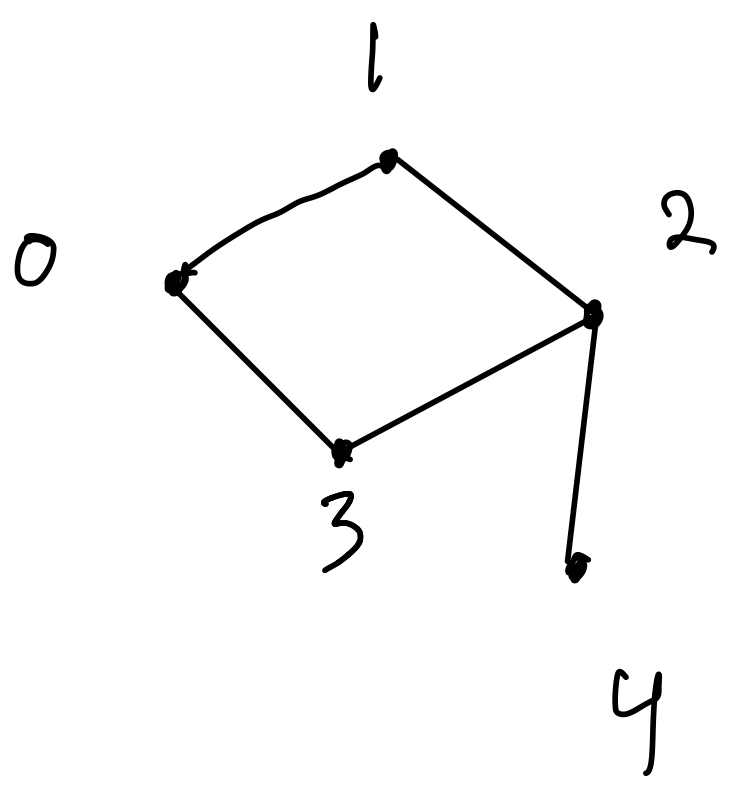10-13 Stringy
Stringy Storage of a Graph
The (until now fictional) “string method” of storing a graph lists strings of connected vertices on every line.
Assignment: Write a function that accepts an already open file
(returned from open) and creates an instance of your Graph class
by reading the “stringy graph file” described below.
def read_stringy(infile) -> Graph:
firstline = infile.readline()
return None
General format of a “stringy graph file”:
V xxx
L yyy
v1 v2 v3 ... vn
w1 w1 w3 ... wn
...
Interpretation
- The line with the
Vspecifies how many vertices, numbered 0 up to xxx. - The line with the
Lspecifies how many vertex-chain specifying lines there are in the file. - The remaining lines indicate edges from v1 to v2, v2 to v3, v3 to v4, etc.
Example 1
A rectangle graph could be written:
V 4
L 1
0 1 2 3 0
This would be equivalent to the adjacency list:
NVERT 4
0 1 3
1 2
2 3
Example 2
Working with the graph below.

The read_stringy function should be able to take in any
of the alternative inputs listed below and produce a Graph that
represents the picture above.
There are several ways to write the graph for Example 2.
One possibility:
V 5
L 2
0 1 2 3 0
2 4
Alternatively:
V 5
L 2
2 3 0
0 1 2 4
Or even:
V 5
L 1
2 3 0 1 2 4
Additional Features
-
Add a line
A zzzto indicate how many “aliases”. -
Then zzz lines of the form
0 WALL 1 BRING 2 HELP 3 DEMOAfter the aliases are specified, you can give the list of vertices by using the aliases:
WALL BRING HELP DEMO WALLis equivalent to
0 1 2 3 0